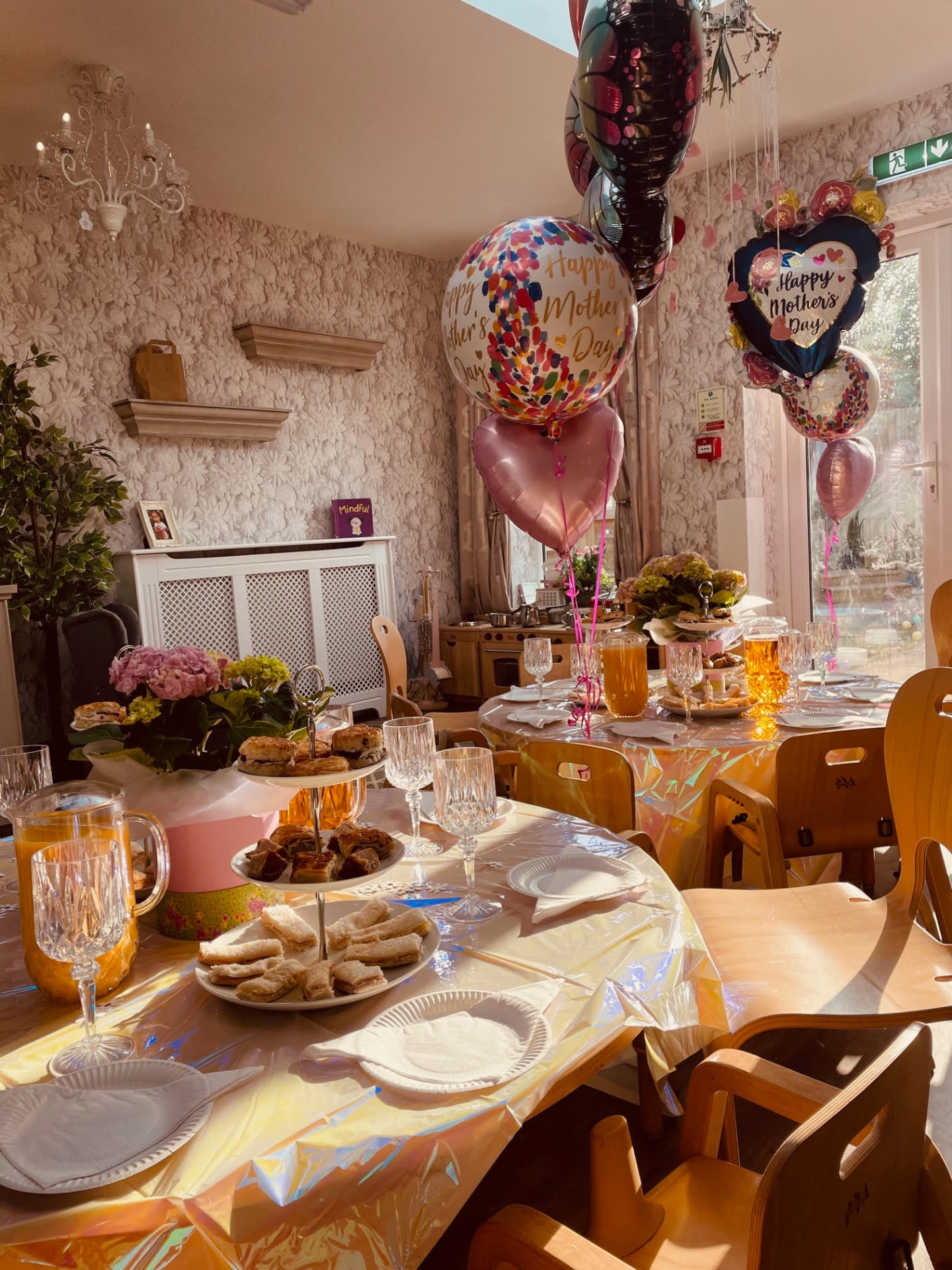Our Baby Lounge
We have the capacity for twelve babies per day on a ratio of one adult to three children. Our baby room is a bright and airy room with lots of natural light. The children access this room between six weeks and two years of age.
We have a separate area for baby changing and a bedroom for sleep times.
Our baby room is a very home reflective room. We have the 'lounge area' that is used for quiet play including reading to children, singing to children, tummy time and treasure basket, and heuristic play opportunities. We have a further 'dining area' which is used for meal and snack times, the table is then covered in this area for messy play opportunities and playdough experiences. Finally, we have our 'play area' which is used for a small world, construction, and role play. This area benefits from carefully selected resources to further stimulate children's learning and play opportunities.
This space also has free flow access to its own garden with a growing patch for babies, water, and sand play opportunities and 'fun on the floor' messy play activities.

How to support your baby's learning ...

Early Literacy
Early literacy is crucial. Introduce your baby to songs and rhymes from birth. Particularly ones that use positive touch. Don't worry about how you sound or getting the tune right. Your baby will love hearing you sing to him.
Fingers, thumbs and toes.
Fingers, thumbs and toes.Eyes and ears and toes,Hair and skin, lips and chin,Have you got all those?Fingers, thumbs and toes.Eyes and ears and toes,Hair and skin, lips and chin,Yes, you have all those.
Peter RabbitPeter rabbits got a fly upon his nosePeter rabbits got a fly upon his nose,Peter rabbits got a fly upon his nose,And he flipped it and he flopped it til the fly flew away.Floppy ears and curly whiskers,Floppy ears and curly whiskers,Floppy ears and curly whiskers,And he flipped it and he flopped it til the fly flew away
Clappa, Clappa Handies
Clappa, clappa handies, Teddys come to play,
Cover up your little eyes whilst he hides away,
Wheres Megan.... Wheres Megan
There she is!!
The above rhymes are great for positive touch, stroke your baby's ears, toes, etc. as you sing along. Use lots of positive facial expressions. I have another booklet with lots of songs/rhymes and ways to support these.

Messy play!
As your child gets a bit bigger and is able to sit unattended, you can start exploring more activities with them. A tough spot is a great tool to keep mess contained with young babies and they can sit in the tray with it if they want to. They are available if all different colours to suit your home and you can buy them on amazon. However, any tray or bowl will do.
Rice, chickpeas and pasta are great for filling and emptying, providing language opportunities for children, they are a fabulous tactile resource and you can make them in whatever colour you like. To colour them all you need to do is put some in a zip bag with paint or food colouring of your choice - shake - and then leave overnight to dry. Place them in a tray with some wooden spoons and some bowls/containers (yoghurt, butter or ice cream pots are just as good) and you and your child will have lots of fun and exploration.
Mess free painting - squirt some paint into a zip lock bag - tape up the top and let baby splay and splodge it until they've created a beautiful mark-making experience. Cornflour mixed with water - what we call 'Gloup' - fabulous sensory/messy experience - you can add colouring to this too - it is natural and so if your baby puts it to their mouth, it won't hurt them although encourage them not to.

Treasure Baskets
We encourage the use of treasure baskets for babies. In the 1980's Elinor Goldschmied developed treasure baskets for babies that are able to sit up. Although bumbos are fabulous to enable young children to explore treasure baskets who haven't quite mastered sitting yet. You can also place your child between your legs with their back resting on you or prop them up with cushions - just make sure there is no chance of toppling over to either side.
To create a treasure basket, usually, you would have a basket (or box/tray etc. - whatever you have available). Within the basket, you would place a variety of objects for your baby to explore. We all know how frustrating it is when we've spent a small fortune on baby toys and they'd rather play with your car keys or the television remote. Treasure baskets can be themed or not. Babies love noises and sounds, anything they can clink together, rattle , or make a sound with. Tactile resources are fabulous! Lots of opportunities for filling and emptying too are a must! Please just ensure that all your resources are kept clean and are large enough that your baby can't choke.
Let your baby explore with her mouth! The roof of the mouth is often the most sensitive part of a baby's anatomy, it is how they explore and learn about their world! By doing this - what we call "oral exploration", babies are able to taste and explore the texture of objects. This usually lasts until babies are around seven to twelve months but can be longer and is a key developmental stage.
'Research has shown that children that are better at detecting rhymes tend to be more successful at learning to read, a relationship that is independent of children's class backgrounds, intelligence, and level of memory ability'. Bradley and Bryan 1985


